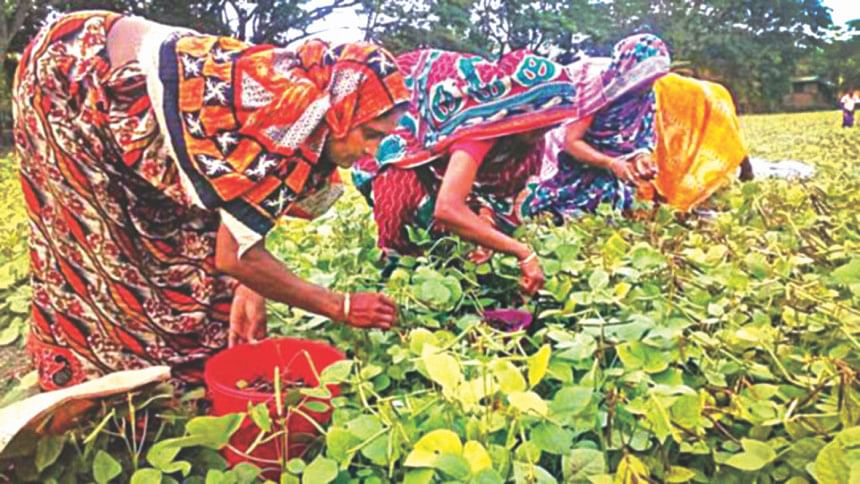It's time to value women's unpaid work

The socio-economic conditions of women in Bangladesh have improved significantly over the years. Progress is evident in education, health and empowerment, which is an indication of women's increasing participation in the workforce.
Even the country's top political posts—prime minister, speaker of parliament and opposition leader—are held by women. Around a dozen women are in the top tier of bureaucracy. Also, the readymade garment industry plays a key role in economically uplifting a large cohort of poor and vulnerable women in Bangladesh.
Yet, the contribution of women in official estimation of GDP is much lower than that of men due to their engagement in the informal sector where there is no monetary remuneration.
According to International Labour Organisation (ILO), worldwide women account for about one-third of the workforce in the informal sector. But in Bangladesh the rate is much higher than the world average.
A joint study report published by the Centre for Policy Dialogue and Manusher Jonno Foundation (MJF) in December 2015 found that only 3.25 percent of employed women work in the public sector and 8.25 percent in the private sector. The remaining 89.5 percent are employed in the informal sector, with varying and often unpredictable earning patterns.
“Many of them work without compensation,” said the report.
Unpaid work of women in Bangladesh comes in many forms, such as childcare and care for the elderly, sick and disabled in the household and volunteer work in the community as well.
Domestic labour and care-giving have value and create social capital, which would add substantially to the GDP of a country if they were valued appropriately. But the country's national accounting system does not include such unpaid work, which is performed mainly by women, in its calculation of GDP or GNI.
This results in underestimation of women's contribution to the national economy and their actual worth within the family and in the economy remains unrecognised, unremunerated and unappreciated.
In view of the above, CPD and MJF undertook the study to measure the GDP through a gender lens. The study was conducted among 5,670 households in 64 districts with a population coverage of 25,266.
The study found that time spent on non-system of national accounts (SNA) activities by a female member of a household is about three times higher than that of a male household member. Secondly, the study estimated that the value of women's unpaid household work (non-SNA activities) was equivalent to nearly 77 percent of Bangladesh's GDP in 2013-14.
“We are not advocating for inclusion of women into the GDP calculation system. But we want to see a satellite account that will show women's contribution in the economy,” said Dr Fahmida Khatun, executive director of CPD.
According to World Bank, increasing labour force participation of women to 45 percent by 2020 from 34 percent now will help Bangladesh enhance its GDP by one percentage point.
Zahid Hussain, lead economist of the WB's Dhaka office, said barriers to women's labour force participation are asymmetric household responsibility, human capital deficiency and open discrimination.

 For all latest news, follow The Daily Star's Google News channel.
For all latest news, follow The Daily Star's Google News channel. 



Comments